Isordil dosages: 10 mg
Isordil packs: 30 pills, 60 pills, 90 pills, 120 pills, 180 pills, 360 pills

Buy on line isordil
Reflectance pulse oximetry probes have the emitters and detector organized on the identical side. These curves are developed using wholesome volunteers and incorporated into the pulse oximeter. When this modality is combined with a routine anomaly scan and newborn bodily examination screening, 92% of important congenital coronary heart disease lesions may be recognized. Along with measuring O2 saturation, the heartbeat oximeter may also be used as a photoplethysmograph. The plot illustrates the effect of intrathoracic blood quantity in the pulse oximeter trace. The variation within the hint with respiration is related to the fluid responsiveness of the affected person. Because SpO2 is a measurement of functional and not fractional SaO2, the presence of different Hb variants can considerably affect its accuracy. The nonlinearity of the Hb dissociation curve prevents the detection of hyperoxia with SpO2 for high SaO2, whereas for low saturations similar to at altitude, small adjustments in PaO2 can produce large changes in SpO2. A variety of circumstances can lead to inaccuracies in pulse oximeter readings (Table forty one. These situations embrace decreased perfusion, motion artifact, venous pulsation, low SaO2, variant Hb species, the presence of intravascular dyes, and the presence of nail polish. Preliminary knowledge counsel that these probes could also be useful in neonates with cyanotic congenital heart illness. Significantly erroneous reductions in SpO2 may be observed for systolic blood pressures lower than 80 mm Hg. Manufacturers have developed superior proprietary signal processing algorithms that effectively filter out noise attributable to motion. Venous pulsations could be because of excessively tight placement of adhesive finger probes, extreme tricuspid regurgitation, probe placement in dependent positions. The presence of further species of Hb can even generate misguided pulse oximeter readings. As outlined earlier, the function of the pulse oximeter relies on the idea that the only parts current within the blood able to absorbing gentle on the two wavelengths used are O2Hb and deO2Hb. Under regular circumstances, this assumption is legitimate, and the SpO2 readings accurately mirror the SaO2. However, the presence of significant concentrations of other Hb species or substances absorbing gentle at the used wavelengths will result in faulty SpO2 readings. Thus, in a affected person with carbon monoxide poisoning, the SpO2 might be falsely elevated. An R-value of 1 represents the presence of equal concentrations of O2Hb and deO2Hb and corresponds to an SpO2 of 85%. Thus, in a patient with methemoglobinemia, the SpO2 might be 80% to 85%, irrespective of the SaO2. A relatively unusual trigger for decreased SpO2 readings is the presence of congenital variants of Hb. Some variants, similar to Hb Bassett, Hb Rothschild, and Hb Canabiere, have a lowered affinity for O2, and changes in SpO2 appropriately mirror modifications in SaO2. However, disposable probes permit for safer placement (in case of patient movement) and provide the potential of monitor websites other than acral areas. Although lowered infectious transmission is a purported benefit of disposable probes, evidence is limited, and one must contemplate that pulse oximetry probes symbolize a small fraction of anesthetic tools requiring decontamination. For occasion, ear and forehead probes may be extra reliable throughout vasoconstriction in contrast with finger probes, on circumstance that the arterial vessels of such areas are less conscious of circulating catecholamines. As an example, in hypotensive sufferers that require vasopressors, ear and forehead probes may present extra correct worth of SpO2, as a end result of these areas are much less likely to vasoconstrict with endogenous and exogenous catecholamines compared to fingers or toes. It has been a incessantly monitored variable in critically unwell patients, since it reflects the typical O2 saturation of the blood coming back from the physique to the best coronary heart, weighted by the respective regional blood flows. Role of central and combined venous oxygen saturation measurement in perioperative care.
Generic isordil 10mg amex
In awake, wholesome volunteers, the maximum twitch melancholy occurs at a dantrolene dose of 2. Dantrolene should probably be repeated a minimum of every 10 to 15 hours, since it has a half-life of a minimal of 10 hours in children and adults. Potent risky anesthetics and succinylcholine have to be avoided, even in the presence of dantrolene. Porcine and human research have persistently demonstrated the shortage of hazard of amide anesthetics. Jones and colleagues demonstrated that desflurane required longer purge time than sevoflurane on each the Datex-Ohmeda Aestiva and Aisys machines. Occupational Safety and Health Administration also has pointers for workplace exposures. Many of these sufferers have undergone procedures uneventfully, similar to dental analgesia and obstetric anesthesia, before the prognosis of susceptibility was made. The affected person can enter the therapeutic surroundings in a reassured, relaxed, and cozy state. Outpatient procedures are possible in most environments; the time of discharge is dependent upon the standard outpatient standards. Administration of three vials of 250 mg Ryanodex injectable suspension is the choice preparation plan. A genealogy with particular details about anesthetic publicity and agents can estimate the probability of exposure to triggering brokers. The affected person should journey to the test heart for a surgical biopsy to ensure viability and accurate outcomes. Muscle biopsy contracture studies, performed at about 30 centers all over the world, involve exposure of the muscle biopsy pattern to halothane, caffeine, and, within the North American check, to halothane plus caffeine. Dantrolene have to be avoided before biopsy as a outcome of it masks the response to contracture-producing medication. Precautions are needed in regard to general anesthesia, and triggers include all potent risky agents and succinylcholine. It is characterized by sensitization of the peripheral leukocytes to the myelin antigen and a subsequent inflammatory response, monocytic and lymphocytic perivascular cuffing, and glial scars with plaque formation within the central nervous system, especially within the periventricular white matter. The disease impacts mainly ladies, primarily between 20 and 40 or forty five and 60 years of age. Cranial nerve dysfunction, ataxia, and bladder and bowel disturbances are also common. Chronic signs can also embrace spastic paraparesis, appendicular tremor, psychiatric disturbances similar to despair or euphoria (la belle indifference), and dementia. Teriflunomide is related to hepatic damage, while mitoxantrone could be associated with cardiomyopathy. In general, preoperative chronic immunosuppressive treatment ought to be continued through the perioperative interval. Increased physique temperature is often cited as an offending mechanism, possibly by inflicting a whole block of conduction in demyelinated nerves. Body temperature ought to subsequently be carefully monitored and controlled during the perioperative period. Great care must be exercised to reduce changes in fluid homeostasis, and central hemodynamics (preload, afterload) and to maintain respiration. Epidural anesthesia has been used successfully, but spinal anesthesia is normally not beneficial 9. Consider prolonged postoperative care in a monitored setting if patient has severe preoperative weakness or respiratory compromise been reported. The use of rocuronium with sugammadex to ensure full reversal has been instructed as a protected various. As the blood�brain barrier may also be broken by demyelination, spinal anesthesia is usually not really helpful for these patients. The need for postoperative care depends on the preoperative symptoms, sort of surgery, and status of the patient at the finish of the surgical procedure. Degenerative loss of these neurons results in progressive muscle weak point, muscle atrophy, and loss of neuronal mass in these places. Patients present with gradually spreading focal weakness and muscle atrophy (typically of the hands), spasticity, and hyperreflexia of lower extremities. Most cases are sporadic, but uncommon familial varieties (autosomal dominant and recessive forms) do exist.

Isordil 10mg
Cost-effectiveness analysis of stocking dantrolene in ambulatory surgical procedure facilities for the treatment of malignant hyperthermia. Accelerating the washout of inhalational anesthetics from the Drager Primus anesthetic workstation: effect of exchangeable inside parts. Preparation of the Drager Primus anesthetic machine for malignant hyperthermiasusceptible patients. Preparation of the Drager Fabius anesthesia machine for the malignant-hyperthermia susceptible affected person. Preparation of Datex-Ohmeda Aestiva and Aisys anaesthetic machines for use in malignant hyperthermia vulnerable patients. Preparing a brand new era anaesthetic machine for sufferers vulnerable to malignant hyperthermia. New gadget simplifies workstation preparation for malignant hyperthermia-susceptible sufferers. Regional lactate and carbon dioxide concentrations in a metabolic check for malignant hyperthermia. Effects of caffeine, halothane, and 4-chloro-m-cresol on skeletal muscle lactate and pyruvate in malignant hyperthermia-susceptible and regular swine as assessed by microdialysis. Intramuscular injection of sevoflurane detects malignant hyperthermia predisposition in susceptible pigs. The dose-response relationship and regional distribution of lactate after intramuscular injection of halothane and caffeine in malignant hyperthermia-susceptible pigs. Effects of ryanodine on skeletal muscle lactate and pyruvate in malignant hyperthermia-susceptible and normal swine as assessed by microdialysis. B-lymphocytes from malignant hyperthermia-susceptible patients have an increased sensitivity to skeletal muscle ryanodine receptor activators. Characterization of ryanodine receptor-mediated calcium release in human B cells: relevance to diagnostic testing for malignant hyperthermia. Cytosolic free calcium concentrations in lymphocytes from malignant hyperthermia prone sufferers. Patients with malignant hyperthermia reveal an altered calcium control mechanism in B lymphocytes. Improved noninvasive diagnostic testing for malignant hyperthermia susceptibility from a mixture of metabolites determined in vivo with 31P-magnetic resonance spectroscopy. Anaesthesia for emergency caesarean section in a parturient with bleeding placenta praevia and a probably malignant hyperthermia-susceptible fetus. Suggested Guidelines for Management of the Pregnant-Patient not Believed to be at Risk for Mh, but whose Partners is Susceptible to Malignant Hyperthermia. Recommended standard of cerebrospinal fluid evaluation in the diagnosis of multiple sclerosis: a consensus assertion. Use of rocuronium and sugammadex underneath neuromuscular transmission monitoring in a patient with multiple sclerosis. Pulseless electrical activity throughout basic anesthesia induction in patients with amyotrophic lateral sclerosis. Sensitivity to nondepolarizing muscle relaxants in amyotrophic lateral sclerosis: report of two instances. The spectrum of antecedent infections in Guillain-Barre syndrome: a case-control study. Autonomic perform in demyelinating and axonal subtypes of Guillain-Barre syndrome. Guillain-Barre syndrome after epidural anesthesia: direct nerve root harm could trigger disease. Changes in acetylcholine receptor quantity in muscle from critically sick patients receiving muscle relaxants: an investigation of the molecular mechanism of prolonged paralysis. Impact of intensive insulin remedy on neuromuscular issues and ventilator dependency in the medical intensive care unit. Prolonged vecuronium neuromuscular blockade related to Charcot Marie Tooth neuropathy. Response to atracurium and mivacurium in a patient with Charcot-Marie-Tooth illness.
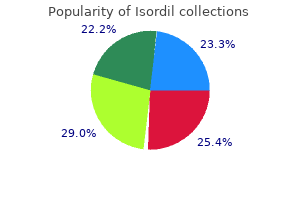
Buy generic isordil 10 mg
Seizures produce hypoventilation and a mixed respiratory and metabolic Cardiovascular System Toxicity Local anesthetics can exert direct actions on both the guts and peripheral blood vessels, in addition to indirect actions on the circulation by blockade of sympathetic or parasympathetic efferent exercise. The primary mechanisms of native anesthetic toxicity are blockades of cardiac sodium channels resulting in adverse inotropy and arrhythmia. Local anesthetics act immediately by reducing the conduction in Purkinje fibers and cardiomyocytes by prolonging the restoration time. Other aspects of local anesthetic toxicity embrace inhibition of fatty acid metabolism, interference with calcium homeostasis, and disruption of the mitochondrial respiratory chain. Action potential length and the effective refractory period are also decreased by native anesthetics. Extremely high concentrations of local anesthetics depress spontaneous pacemaker exercise in the sinus node, thereby leading to sinus bradycardia and sinus arrest. Bupivacaine depresses the rapid part of depolarization (Vmax) in Purkinje fibers and ventricular muscle to a greater extent than lidocaine does. In addition, the speed of recovery from a use-dependent block is slower in bupivacaine-treated papillary muscles than in lidocaine-treated muscles. This slow price of restoration results in incomplete restoration of Na+ channel availability between motion potentials, notably at excessive heart rates. These differential results of lidocaine and bupivacaine have been superior as explanations of the antiarrhythmic properties of lidocaine versus the arrhythmogenic potential of bupivacaine. All local anesthetics exert dose-dependent negative inotropic action on cardiac muscle; the melancholy of cardiac contractility is roughly proportional to conduction blocking potency. Thus bupivacaine and tetracaine are stronger cardio depressants than is lidocaine. Local anesthetics could depress myocardial contractility by affecting calcium inflow and triggered launch from the sarcoplasmic reticulum,113 in addition to by 29 � Local Anesthetics 885 inhibiting cardiac sarcolemmal Ca2+ currents and Na+ currents. Lastly, mitochondrial metabolism is inhibited by bupivacaine, and, to a lesser extent, different long-acting local anesthetics such as ropivacaine,114 whereas the impact of lidocaine is smaller. Cocaine is the one local anesthetic that consistently causes vasoconstriction at all concentrations due to its capability to inhibit the uptake of norepinephrine by premotor neurons and thus to potentiate neurogenic vasoconstriction. Intralipid is a priceless contribution to , however not an alternative choice to, careful and meticulous conduct of regional anesthesia. No medications are uniformly efficient in facilitating resuscitation from bupivacaine-induced cardiac arrest or severe ventricular tachycardia (despite our recommendations relating to Intralipid later). Basic rules of cardiopulmonary resuscitation ought to be emphasised first, including consideration to securing the airway, providing oxygenation and ventilation, and performing chest compressions as indicated. Because resuscitation after local anesthetic-induced circulatory collapse is troublesome, prevention of huge intravascular injection or excessive dosing is crucial. Incremental, fractionated dosing must be the rule for all patients present process main conduction blockade. Based on animal studies121 and a growing variety of human case stories, hospitals and clinics that carry out main conduction blockade or large volume infiltration blockade should hold out there for emergency use a provide of lipid emulsion similar to Intralipid 20%. The cardiotoxicity of bupivacaine seems to differ from that of lidocaine within the following method: 1. Ventricular arrhythmias and fatal ventricular fibrillation could occur more usually after the rapid intravenous administration of a big dose of bupivacaine however far much less regularly with lidocaine. A pregnant patient could also be extra delicate to the cardiotoxic effects of bupivacaine than a nonpregnant animal or patient. Despite the experimental or scientific anecdotal use of many different resuscitation medication in the setting of bupivacaine overdose, present tips focus on standard cardiopulmonary resuscitation, albeit with titration rather than mounted doses of epinephrine, early administration of lipid emulsion, and avoidance of propofol in settings of hemodynamic instability. Ropivacaine (Naropin)122 and levo-(S)-bupivacaine (Chirocaine)123 have been formulated to exploit this stereoselectivity. With these designed adjustments in molecular construction, it was hoped that ropivacaine and levobupivacaine can be much less intrinsically cardiotoxic. Conversely, it seems that the (S)-enantiomers of mepivacaine and bupivacaine are metabolized by the liver more slowly than the corresponding (R)-enantiomers, which might result in somewhat larger systemic accumulation with extended infusions.
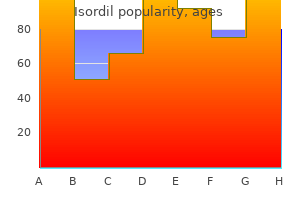
Cheap 10mg isordil with visa
Defining thresholds for crucial ischemia by using near-infrared spectroscopy in the adult brain. Comparing Doppler ultrasonography and cerebral oximetry as indicators for shunting in carotid endarterectomy. Cerebral oximetry in patients undergoing carotid endarterectomy: preliminary results. Tissue oxygen index: thresholds for cerebral ischemia using near-infrared spectroscopy. Accuracy of cerebral monitoring in detecting cerebral ischemia throughout carotid endarterectomy: a comparability of transcranial Doppler sonography, near-infrared spectroscopy, stump strain, and somatosensory evoked potentials. Near-infrared reflected spectroscopy and electroencephalography during carotid endarterectomy-in search of a brand new shunt criterion. The effectiveness of regional cerebral oxygen saturation monitoring using near-infrared spectroscopy in carotid endarterectomy. Good correlation between cerebral oxygenation measured utilizing close to infrared spectroscopy and stump pressure during carotid clamping. Near infrared spectroscopy as a predictor for shunt requirement throughout carotid endarterectomy. Evaluation of a cerebral oximeter as a monitor of cerebral ischemia throughout carotid endarterectomy. Near infrared spectroscopy monitoring throughout carotid endarterectomy: which threshold worth is crucial Spinal nearinfrared spectroscopy measurements during and after thoracoabdominal aortic aneurysm restore: a pilot research. Continuous monitoring of cerebral oxygen saturation in aged sufferers present process major belly surgical procedure minimizes brain exposure to potential hypoxia. Reduced cerebral oxygen saturation during thoracic surgical procedure predicts early postoperative cognitive dysfunction. Cerebral oxygenation in the beach chair position earlier than and during general anesthesia. Tissue oxygen saturation predicts the event of organ dysfunction throughout traumatic shock resuscitation. Continuous muscle tissue oxygenation in critically injured sufferers: a prospective observational examine. Skin pigmentation interferes with the medical measurement of regional cerebral oxygen saturation. Infrared measurement of carbon dioxide in the human breath: "breathe-through" gadgets from Tyndall to the present day. Capnometry and capnography: Technical elements, physiologic elements, and clinical functions. Emergent conduct of regional heterogeneity in the lung and its results on respiratory impedance. Targeted versus continuous supply of risky anesthetics throughout cholinergic bronchoconstriction. The concept of deadspace with special reference to the one breath take a look at for carbon dioxide. Continuous distributions of ventilation-perfusion ratios in regular subjects respiration air and a hundred per cent O2. Pulmonary densities during anesthesia with muscular relaxation-a proposal of atelectasis. Ideal alveolar air and the evaluation of ventilation-perfusion relationships within the lungs. Indices of hypoxemia in patients with acute respiratory distress syndrome: reliability, validity, and medical usefulness. Validation and software of a high-fidelity, computational model of acute respiratory distress syndrome to the examination of the indices of oxygenation at constant lung-state. Indices of pulmonary oxygenation in pathological lung states: an investigation using high-fidelity, computational modelling. An experimental analysis in man of the oxygen pressure gradient from alveolar air to arterial blood throughout rest and train at sea stage and at altitude. Comparison of SpO2 to PaO2 primarily based markers of lung illness severity for children with acute lung injury. Assessment of PaO(2)/FiO(2) for stratification of sufferers with average and extreme acute respiratory distress syndrome.
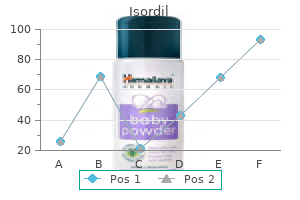
Purchase genuine isordil on line
The pharmacokinetics and pharmacodynamics of rocuronium in patients with hepatic cirrhosis. Mivacurium neuromuscular block on the adductor muscular tissues of the larynx and adductor pollicis in people. Simultaneous determination of neuromuscular block at the larynx, diaphragm, adductor pollicis, orbicularis oculi and corrugator supercilii muscle tissue. Comparison of rocuronium, succinylcholine, and vecuronium for rapid-sequence induction of anesthesia in grownup patients. Facilitation of fast endotracheal intubations with divided doses of nondepolarizing neuromuscular blocking medication. Neuromuscular effects of rocuronium bromide and mivacurium chloride administered alone and in combination. A double-blind, randomized comparison of low-dose rocuronium and atracurium in a desflurane anesthetic. The comparative efficiency and pharmacokinetics of pancuronium and its metabolites in anesthetized man. Pharmacokinetics of pancuronium in sufferers with normal and impaired renal perform. Disposition kinetics of pancuronium bromide in sufferers with whole biliary obstruction. Persistent paralysis in critically unwell sufferers after long-term administration of vecuronium. Interactions between P-glycoprotein substrates and different cationic medicine at the hepatic excretory stage. Pharmacokinetics of the three isomers of mivacurium and pharmacodynamics of the chiral combination in hepatic cirrhosis. Pancuroniuminduced tachycardia in relation to alveolar halothane, dose of pancuronium, and prior atropine. Sympathomimetic effects of pancuronium bromide on the cardiovascular system of the pithed rat. A comparability with the effects of drugs blocking the neuronal uptake of noradrenaline. Similarity between effects of pancuronium and atropine on plasma norepinephrine ranges in man. Pancuronium bromide enhances atrioventricular conduction in halothane-anesthetized dogs. Cardiac responses to imipramine and pancuronium during anesthesia with halothane or enflurane. Bradycardia and asystole following the rapid administration of sufentanil with vecuronium. Cloning and expression of the human and rat m5 muscarinic acetylcholine receptor genes. Autoradiographic visualization of muscarinic receptor subtypes in human and guinea pig lung. Anaphylactic and anaphylactoid reactions occurring throughout anesthesia in France in 1999-2000. Six years without pholcodine; Norwegians are significantly less IgEsensitized and clinically more tolerant to neuromuscular blocking agents. Determination of the hemodynamics and histamine release of rocuronium (Org 9426) when administered in elevated doses beneath N2O/O2-sufentanil anesthesia. Isobolographic evaluation of nondepolarising muscle relaxant interactions at their receptor site. Influence of suxamethonium on the motion of subsequently administered vecuronium or pancuronium. Comparison of intubating conditions after administration of Org 9246 (rocuronium) and suxamethonium. Recoveries of post-tetanic twitch and train-of-four responses after administration of vecuronium with completely different inhalation anaesthetics and neuroleptanaesthesia. The dependence of pancuronium- and d-tubocurarine�induced neuromuscular blockades on alveolar concentrations of halothane and forane. Vecuronium-induced neuromuscular blockade throughout enflurane, isoflurane, and halothane anesthesia in humans.
Diseases
- Feigenbaum Bergeron syndrome
- Scapuloiliac dysostosis
- Mitochondrial encephalomyopathy aminoacidopathy
- Lissencephaly, isolated
- Chromosome 11q partial deletion
- Houlston Ironton Temple syndrome
- Supraumbilical midabdominal raphe and facial cavernous hemangiomas
- Harpaxophobia
- ABCD syndrome
- Cerebro reno digital syndrome
Buy isordil 10mg with visa
The anterior portion consists of the superficial nerve fiber layer and the prelaminar region, a thick tissue that constitutes a lot of the optic disk volume. Immediately posterior is the prelaminar area, adjoining to the peripapillary choroid. The laminar region is a transition zone between columns of glial cells and dense connective tissue plates. Astrocytes are predominant in the anterior optic nerve, and oligodendrocytes and microglial cells are extra frequent in the posterior or retrobulbar optic nerve. The retrolaminar region is the posterior portion of the optic nerve and consists of meningeal sheaths and myelinated axons. The superficial nerve fiber layer derives its blood provide mainly from arterioles in the retina, although in the temporal regions it may obtain blood from the posterior ciliary arteries. The laminar area is supplied by centripetal branches from the short posterior ciliary arteries or by the circle of Zinn-Haller, however the brief posterior ciliary arteries are the first inputs. Pial branches of the central retinal artery and different orbital arteries, the ophthalmic artery, and the posterior ciliary arteries also contribute. The anterior portion of the optic nerve is located to the left, whereas the posterior portion (closer to the brain) is on the proper. Blood circulate in the optic nerve head is autoregulated within a variety of perfusion pressures just like those in the mind of monkeys and sheep. In a small pattern of atherosclerotic monkeys, however, autoregulation was faulty. Other proof of autoregulation is seen in the posterior portion of the optic nerve. In cats, blood move within the optic nerve measured directly by autoradiography remained fixed within the prelaminar, laminar, and postlaminar nerve throughout a spread of systemic imply arterial blood stress values from 40 to more than 200 mm Hg. Orbital magnetic resonance imaging is incessantly nondiagnostic, though some have described adjustments together with enlargement of the nerve from edema or perineural enhancement. Mean age was 52 years; patients who had spine surgery had been youthful (mean age, forty four years) than those in the different groups. Two sufferers had lesions in the central axial portion with 34 � Patient Positioning and Associated Risks 1105 men. For 54% of affected eyes, initial visual acuity was mild perception, with greater than 60% bilateral. In 38%, vision improved, but of 14 sufferers with no mild perception initially, 12 (85%) had no enchancment. In a retrospective case-control study of 28 sufferers with visible loss after backbone surgical procedure, Myers and colleagues found no distinction in lowest systolic blood strain or hematocrit within the affected versus unaffected sufferers. Approximately 57% of sufferers had systolic or mean arterial blood strain 20% to 39% under preoperative baseline, and 25% of sufferers had been at 40% to 49% beneath preoperative baseline. In nearly all of patients, estimated blood loss was greater than 1 L, the median estimated blood loss was 2 L, and the median lowest hematocrit was 26%. Large-volume fluid resuscitation was typical, with median crystalloid administration of roughly 10 L. Most of the patients underwent thoracic, lumbar, or lumbar-sacral fusion procedures that have been usually repeat operations that involved multilevel surgery. Surgical positioning gadgets included the Wilson body (30%), Jackson spinal table (27%), and soft chest rolls (20%). A foam pad was used for head positioning for 57%; 19% had the top in a Mayfield head holder. Approximately, 41% had hypertension, 16% diabetes mellitus, and 10% coronary artery disease. Limitations of this study are associated to information assortment and lack of control nonaffected instances for comparability. These results are necessary because they were obtained from a very giant, randomly collected sample, and instructed the importance of particular preoperative factors. The coding is dependent upon entry of the data by skilled coders; nevertheless, the accuracy relies upon upon the diagnoses recorded by physicians and the process description supplied by the surgeon. There were no variations in preoperative vascular danger factors in these with or without visual loss. There were no differences in circulate indices, perfusion pressures, and carbon dioxide rigidity.
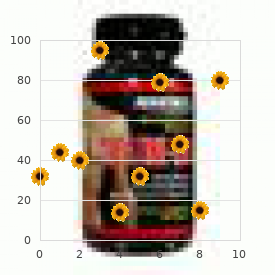
10mg isordil with visa
A comparison with bispectral index and processed midlatency auditory evoked response. New composite index primarily based on midlatency auditory evoked potential and electroencephalographic parameters to optimize correlation with propofol impact website concentration. Comparison with bispectral index and solitary used fast extracting auditory evoked potential index. Relation between mind concentrations, electroencephalogram, center cerebral artery blood circulate velocity, and cerebral oxygen extraction throughout induction of anesthesia. Algorithms to rapidly achieve and keep stable drug concentrations on the site of drug effect with a computer-controlled infusion pump. Algorithm to management "effect compartment" drug concentrations in pharmacokinetic model-driven drug delivery. An evaluation of using inhabitants pharmacokinetic fashions to estimate pharmacodynamic parameters for propofol and bispectral index in kids. Using the time of most impact site focus to combine pharmacokinetics and pharmacodynamics. Estimation of the plasma effect-site equilibration rate fixed (ke0) of rocuronium by the point of maximum effect. Multi-level approach to anaesthetic results produced by sevoflurane or propofol in humans. Pharmacokinetic-pharmacodynamic modeling the hypnotic impact of sevoflurane using the spectral entropy of the electroencephalogram. A conserved behavioral state barrier impedes transitions between anesthetic-induced unconsciousness and wakefulness. Investigation of slow-wave exercise saturation throughout surgical anesthesia reveals a signature of neural inertia in people. A model of the ventilatory depressant efficiency of remifentanil within the non-steady state. Mixed-effects modeling of the intrinsic ventilatory depressant potency of propofol within the non-steady state. Plasma concentrations of alfentanil required to complement nitrous oxide anesthesia for basic surgical procedure. Targetcontrolled infusion of remifentanil or fentanyl during extra-corporeal shock-wave lithotripsy. Fentanyl blood concentration-analgesic response relationship within the therapy of postoperative ache. Computer-controlled infusion of alfentanil versus patient- managed administration of morphine for postoperative analgesia. A pharmacokinetic-pharmacodynamic mannequin for propofol for broad utility in anaesthesia and sedation. Efficient trial design for eliciting a pharmacokinetic-pharmacodynamic modelbased response floor describing the interplay between two intravenous anesthetic medication. A response floor mannequin strategy for steady measures of hypnotic and analgesic effect throughout sevoflurane-remifentanil interplay. Comparison of plasma compartment versus two methods for impact compartmentcontrolled target-controlled infusion for propofol. Plasma concentration of fentanyl, with 70% nitrous oxide, to prevent motion at skin incision. C50 for propofol-remifentanil targetcontrolled infusion and bispectral index at lack of consciousness and response to painful stimulus in chinese sufferers. Comparative pharmacokinetics and pharmacodynamics in wholesome grownup male volunteers 30. The impact of accelerating age on thiopental disposition and anesthetic requirement. Semilinear canonical correlation utilized to the measurement of the electroencephalographic effects of midazolam and flumazenil reversal. Effect website concentrations of remifentanil and pupil response to noxious stimulation. Determination of the efficiency of remifentanil in contrast with alfentanil utilizing ventilatory depression as the measure of opioid impact. An analysis of the accuracy of pharmacokinetic data for the pc assisted infusion of alfentanil.
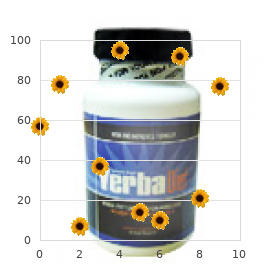
Buy cheap isordil 10mg on line
It has, relatively lately, been estimated that postoperative respiratory complications can occur in up to 80% of surgical patients, noting obesity, preexisting pulmonary disease, and superior age are among the many chief risk components. Preoperative assessment can also set up baseline operate and the feasibility of surgical intervention. Whereas quite a few investigators have used pulmonary function tests to define inoperability or highrisk versus low-risk groups for pulmonary complications, few have been able to demonstrate that the efficiency of any specific preoperative or intraoperative measure, except perhaps smoking cessation and physical exercise such as a strolling program, reliably decreases perioperative pulmonary morbidity or mortality and improves patient outcomes. Because routine preoperative pulmonary testing and care are mentioned extensively in Chapter 41, the present discussion is restricted to an assessment of the effectiveness of this type of care. In fact, few randomized prospective studies indicate an outcome good factor about preoperative preparation. Stein and Cassara randomly allocated forty eight sufferers to endure preoperative remedy (cessation of smoking, administration of antibiotics for purulent sputum, and use of bronchodilating medication, postural drainage, chest physiotherapy, and ultrasonic nebulizer) or no preoperative therapy. In addition, the therapy group spent a median of 12 postoperative days within the hospital as compared with 24 days for the 21 survivors within the no-treatment group. Hulzebos and colleagues performed a single-center randomized trial of intensive inspiratory muscle training. Smokers who stopped for lower than 8 weeks truly had an increase (from 33% for current people who smoke to fifty seven. Other investigators have discovered that both shorter and longer durations of cessation of smoking have been wanted earlier than attaining cardiovascular220 and hematologic profit. Reduction in smoking within 1 month of surgical procedure was not associated with a decreased risk for postoperative pulmonary issues. Nakagawa and coauthors also reported higher pulmonary complication charges in patients present process pulmonary surgery who quit within 4 weeks of surgical procedure than in current smokers or those who had stopped smoking for more than 4 weeks. Wong and colleagues carried out a prospective, multicenter, double-blind, placebo-controlled trial, in which 286 sufferers were randomized to obtain varenicline or placebo. The overall price of combined intraoperative and instant postoperative complications was not considerably completely different between intervention and control teams. At follow-up 30 days postoperatively, smoking cessation was reported in 22 patients (28. When Skolnick and coworkers studied 602 youngsters prospectively, publicity to passive smoking (as measured by urinary cotinine, the main metabolite of nicotine) correlated instantly with airway complications. Thus this demonstrates that the end result improves when any concern about lung function is proven by someone knowledgeable in maneuvers designed to clear lung secretions. Bartlett and coworkers randomly assigned one hundred fifty patients present process intensive laparotomy to 1 of two groups. Only 7 of seventy five patients utilizing incentive spirometry had postoperative pulmonary issues, versus 19 of seventy five within the control group. However, Lyager and colleagues randomly assigned 103 patients undergoing biliary or gastric surgery to receive either incentive spirometry with preoperative and postoperative chest physiotherapy or solely preoperative and postoperative chest physiotherapy. These studies are usually poorly controlled, not randomized, or retrospective in design (or any combination); these deficiencies probably considerably bias the results towards discovering a benefit in lowering postoperative pulmonary complications. Meta-analyses have instructed a benefit of anesthetic and pain administration with respect to respiratory outcomes. Rodgers and associates reviewed 141 trials involving 9559 sufferers who had been randomized to obtain neuraxial blockade or basic anesthesia. Overall mortality was significantly less frequent within the neuraxial blockade group (2. In subgroup analyses, regional anesthesia was associated with improved survival and fewer pulmonary complications amongst sufferers with intertrochanteric fractures however not among patients with femoral neck fractures. Boushy and coworkers found that grades of preoperative dyspnea correlated with postoperative survival. Confusion, obtundation, agitation, spasticity, discoordination, bulbar malfunction C. With increasing numbers of danger components present, the speed of problems elevated from 0. Arozullah and colleagues subsequently developed a danger index for postoperative pneumonia by using information on a hundred and sixty,805 patients undergoing major noncardiac surgical procedure and validated the index through the use of information on an additional one hundred fifty five,266 sufferers. Physical examination can reveal a pleural rub, wheezing, rales, a fixed and split second heart sound, proper ventricular carry, or proof of venous thrombosis. A high diploma of suspicion is necessary to warrant angiography and anticoagulation or fibrinolytic remedy.
Order isordil online now
The disease is due to lack of operate of one of the two totally different ion channel types: CaV1. It has a powerful male predominance, and is rather more widespread in sufferers of oriental descent. Preventive measures similar to maintaining regular physique temperature and low serum potassium ranges and avoiding hypoglycemia are helpful in limiting such paralysis. General anesthesia, postoperative stress, glucose-containing intravenous options, and long-acting neuromuscular blockers are associated with postoperative paralytic occasions. Diagnosis rests on acute consciousness of the signs and signs of this syndrome, of which hyperthermia is a late signal. Specific treatment consists of administration of dantrolene to decrease muscle Ca2+ ranges, and symptomatic therapy consists of reversal of the acid-base and temperature modifications. Acknowledgment this article is a consolidation of two chapters in the 8th version, Chapter 42, Neuromuscular Disorders and other Genetic Disorders and Chapter forty three, Malignant Hyperthermia and Muscle-Related Disorders. The editors, publisher, and the returning authors, want to thank the next authors: Aranya Bagchi, Richa Saxena, and Diptiman Bose for his or her contributions to the prior edition of this work. Skeletal muscle acutely and unexpectedly will increase its sarcoplasmic Ca2+ concentration, thereby leading to increased oxygen consumption and lactate manufacturing, and leading to greater warmth production, respiratory and metabolic acidosis, muscle rigidity, sympathetic stimulation, and increased mobile permeability. It is a homozygous, single point mutation of RyR1 in swine and a heterozygous disorder in humans, in whom there may be a modification of RyR1 protein operate by interacting structures, 35 � Neuromuscular Disorders Including Malignant Hyperthermia and Other Genetic Disorders 30. De Novo Reconstitution Reveals the Proteins Required for Skeletal Muscle Voltage-Induced Ca(2+) Release. In Engel A, Franzini-Armstrong C, eds: Myology, 3rd ed, New York: McGrawHill; 20041845. Respiratory Function as a Measure of Muscle Strength in Young Boys with Duchenne Muscular Dystrophy. Glucose-6-phosphatase deficiency (glycogen storage illness I, von Gierke disease). Perioperative management of the paediatric patient with coexisting neuromuscular disease. Prevalence of malignant hyperthermia and relationship with anesthetics in Japan: knowledge from the prognosis process mixture database. Prevention and treatment of malignant hyperthermia in licensed training hospitals in Japan: a questionnaire. Presence of two different genetic traits in malignant hyperthermia families: implication for genetic evaluation, analysis, and incidence of malignant hyperthermia susceptibility. Prevalence of malignant hyperthermia because of anesthesia in New York State, 2001-2005. Etiological standing and associated studies of pale, soft, exudative porcine musculature. Identification of a mutation in porcine ryanodine receptor related to malignant hyperthermia. Effects of dantrolene on myoplasmic free [Ca2+] measured in vivo in sufferers prone to malignant hyperthermia. Enhanced excitationcoupled calcium entry in myotubes expressing malignant hyperthermia mutation r163c is attenuated by dantrolene. Chromosome mapping of 5 human cardiac and skeletal muscle sarcoplasmic reticulum protein genes. Structure, operate, and regulation of the skeletal muscle dihydropyridine receptor. Regions of the skeletal muscle dihydropyridine receptor crucial for excitation-contraction coupling. Two Regions of the Ryanodine Receptor Involved in Coupling with L-Type Ca2+ Channels. Bidirectional signaling between calcium channels of skeletal muscle requires multiple direct and indirect interactions. Formation of junctions involved in excitation-contraction coupling in skeletal and cardiac muscle. Homer protein increases activation of Ca2+ sparks in permeabilized skeletal muscle. De Novo Reconstitution Reveals the Proteins Required for Skeletal Muscle Voltage-Induced Ca(2+) Release; 2017. Malignant hyperthermia susceptibility arising from altered resting coupling between the skeletal muscle L-type Ca2+ channel and the kind 1 ryanodine receptor.
Real Experiences: Customer Reviews on Isordil
Marus, 58 years: Each of these bands produces an impartial sign representative of the thoracic and abdominal cross-sectional area, and the sum of those two alerts calibrated against a known fuel volume yields lung volume change. Risk of intraoperative hypotension with loop diuretics: a randomized managed trial.
Abe, 28 years: Disposition kinetics of pancuronium bromide in sufferers with total biliary obstruction. Pharmacokinetics of sugammadex in topics with average and extreme renal impairment.
9 of 10 - Review by O. Ur-Gosh
Votes: 330 votes
Total customer reviews: 330


